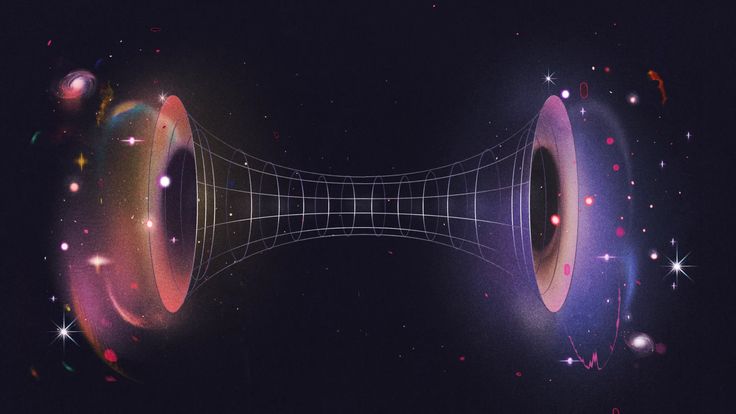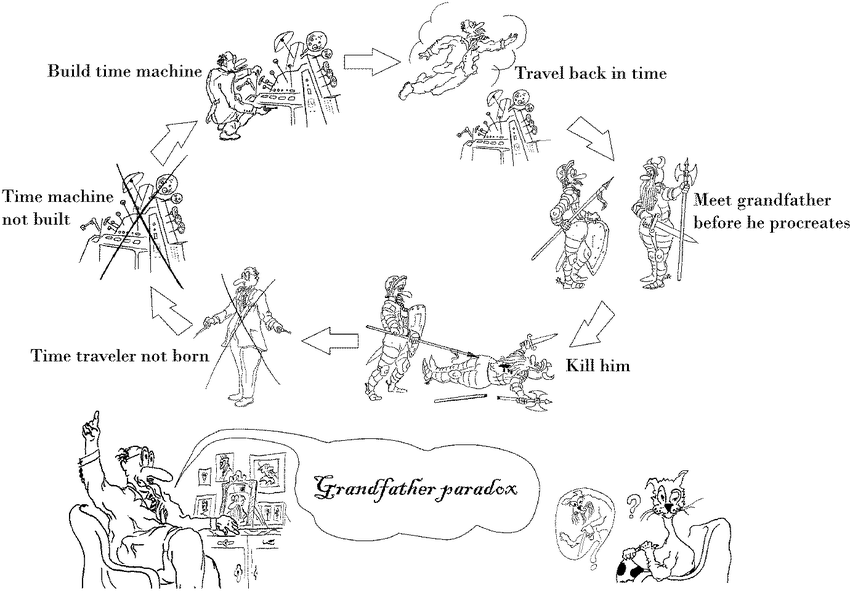Time travel has fascinated humans for generations, appearing in countless movies and books. The idea of moving between different points in time seems like pure fantasy, yet science suggests it might be more real than we think.
Albert Einstein’s theories revealed that time moves differently for different people. While we can’t hop into a time machine like in science fiction, scientists have discovered that time travel already happens around us every day.
Modern technology, such as GPS satellites, relies on time travel principles to function properly. This article will move more deep into the time travel theories and physics. These interesting facts will bring you closer to the facts and myths.
What Is Time and Einstein’s Theory?
Albert Einstein changed how we think about time with his theory of relativity. He showed that time and space connect together, forming what scientists call space-time. According to NASA’s Space Place, Einstein discovered that nothing can travel faster than the speed of light, which moves at 186,000 miles per second.

Einstein’s theory reveals that the faster you move, the slower time appears to pass for you. This means time isn’t the same everywhere in the universe. Someone racing through space at high speeds experiences time differently than someone sitting still on Earth.
Scientists have proven this theory to be effective through real-world experiments. They placed two identical clocks in different locations – one stayed on Earth while the other flew on an airplane. After the plane traveled around the world, the flying clock ran slightly slower than the one on the ground.
How Time Travel Works In Reality?
Time travel happens every day, though not in the dramatic way movies show us. We all travel through time at one second per second, moving from one moment to the next. However, Einstein’s discoveries show that this rate can change.
As per Sky at Night Magazine, astronauts experience a form of time travel during their space missions. When astronauts visit the International Space Station, they orbit Earth at about 17,500 miles per hour. This high speed causes time to pass slightly slower for them compared to people on Earth.
GPS Satellites and Time Travel
GPS technology provides the best everyday example of time travel in action. These satellites orbit Earth at approximately 8,700 miles per hour, which slows their clocks down compared to those on Earth. At the same time, the satellites fly about 12,550 miles above our planet, where Earth’s gravity is much weaker.
Einstein’s theory explains that weaker gravity makes time move faster. The combination of these effects means GPS satellite clocks run slightly faster than clocks on Earth. Scientists must account for these time differences, or GPS systems would provide incorrect directions by several miles each day.
Time Travel Theories
Popular scientist Einstein’s theories make time travel difficult, so some researchers have proposed alternate solutions to leap back and forth.
1. Black Holes:
Black holes create some of the strongest gravitational forces in the universe. According to UMBC research, these massive objects can bend space-time so much that they affect how time flows. Imagine two people – one on Earth and another near a black hole. Time moves much more slowly for the person near the black hole because of the intense gravity.

If we could observe both people on Monday, by Friday, the person on Earth would have experienced a full week, while the person near the black hole might have only reached Wednesday. This effect could theoretically allow time travel to the future.
2. Cosmic Strings:
For potential time travelers, another theory involves cosmic strings, which are narrow tubes of energy stretched across the whole length of the ever-expanding universe. These thin regions, which are left over from the first cosmos, are also known to contain huge amounts of mass and thus could warp the space around them.
According to most scientists, Cosmic strings are either infinite or they are in loops without any ends. The approach of two such strings parallel to every other would bend space-time so hard and in such a configuration that it may make time travel possible in theory too.
3. Infinite Cylinder:
Astronomer Frank Tipler proposed a mechanism known as the Tipler Cylinder, where one would take matter 10 times the sun’s mass and then roll it into a very dense cylinder.

After spinning up a couple of billion revolutions per minute, a spaceship nearby, which follows a precise spiral around this cylinder, can get itself on a “closed, time-like curve,” as per the Anderson Institute. However, this method also has its limitations. Additionally, it takes into account the fact that the cylinder must be long for this to work.
The Grandfather Paradox: A Classic Time Travel Conundrum
Time travel to the past creates logical problems called paradoxes. The most famous example is the grandfather paradox. It is a paradoxical situation where an individual time traveler goes back in time and kills their grandfather before he has any children, thereby preventing their birth.

This paradox raises questions about time and causality, i.e., whether one can alter the past without changing the future. The grandfather paradox has been the subject of numerous works of fiction, including movies, TV shows, books, and scientific papers.
Although the paradox remains unresolved, as time travel is still only a theoretical concept, it has fed the imagination of scientific and literary communities for decades.
Additional Read: Best Physics Games You Should Play (2020)
Can we travel through Time Machines?
Normally, we understand that traveling forward or back in time would require us to have a tool known as a time machine to get there, be it traveling back to a time or traveling forward.
Usually, machine research involves bending space and time, so that point lines turn back on themselves to make a loop which is technically referred to as a closed time-like curve.
In other words, time machines are thought to be a wish for an exotic sort of matter with so-called negative energy density. Such exotic matter has bizarre properties, including moving in the opposite direction to normal matter when it is pushed. Such matter could theoretically exist, but if it did, it would be present only in quantities too small for the development of a machine.
However, time travel research suggests that time travel is possible without exotic matter. To go back in time, a time traveler would race around inside the doughnut, going further back into the past with each lap. This theory features several obstacles, however.
The gravitational fields required to form such a closed time-like curve would need to be strong enough, and manipulating them would need to be precise.
Future Of Time Travel Theory
Time travel remains one of the most intriguing questions in science. While we can’t build time machines like those in movies, Einstein’s theories show that time travel happens in small ways around us constantly. GPS satellites, space travel, and astronomical observations all involve time travel effects.
The universe may allow for limited time travel to the future through extreme speeds or strong gravitational fields. However, traveling to the past faces major obstacles from physics laws and logical paradoxes.
Scientists continue to explore new ideas, but for now, we can only enjoy dramatic time travel in our favorite stories and films while appreciating the subtle time travel that shapes our daily lives.
Conclusion: Many Scientists State That Time Travel Is Possible
Scientific evidence confirms that time travel exists in subtle forms through relativistic effects and gravitational time dilation.
Astronauts age differently during space missions, GPS systems need constant time adjustments, and telescopes show us distant galaxies from the past. While dramatic backward time travel faces serious problems from physics laws and logical paradoxes, the future might still hold new discoveries.
Scientists continue researching wormholes, black holes, and quantum theories. Anyways, understanding real-time travel helps us appreciate how amazing our universe truly is.
Checkout: How to Apply for a NASA Internship?
